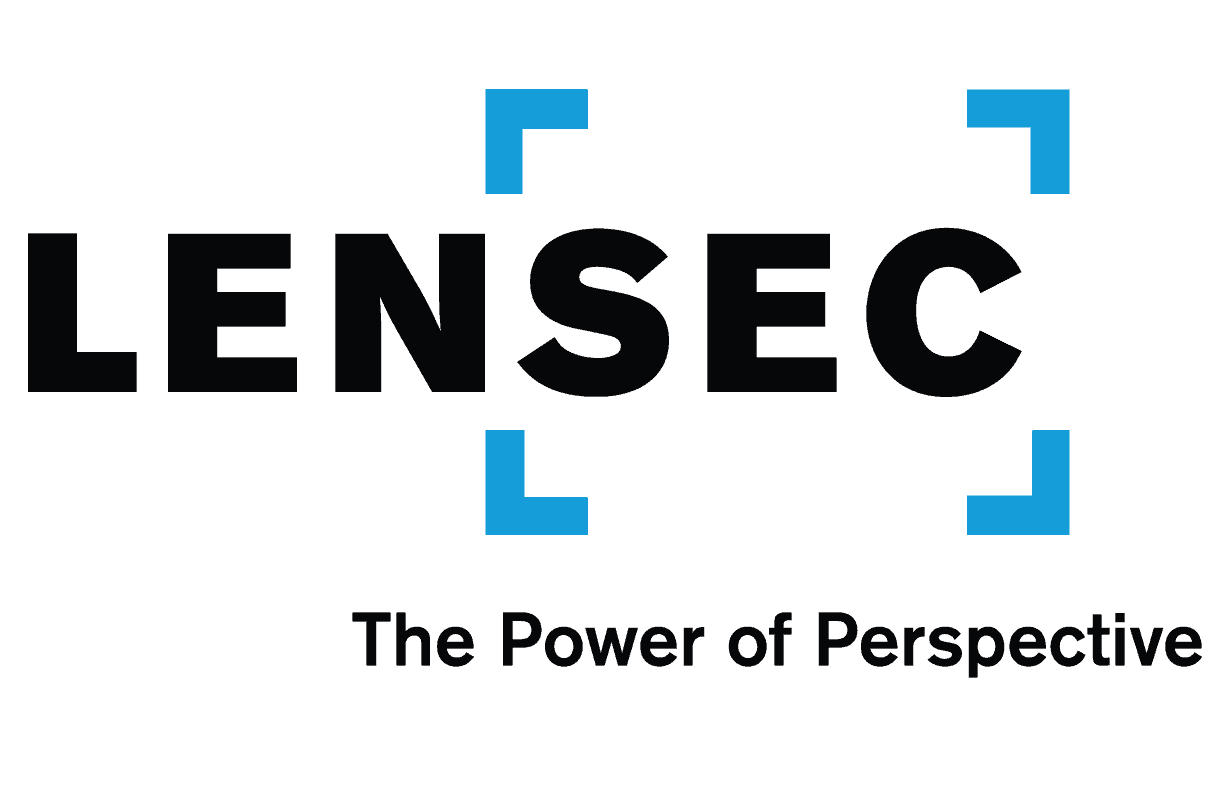
When the security integrator and end-users are considering surveillance systems, there is a great deal of complexity to consider. The average end-user probably doesn’t know where to begin, or where to focus their attention as they put together a solution for their business or organization. Security integrators can help, but the myriad of choices con be complicated.
Razberi Technologies is a LENSEC technology partners, and their experts tell us that complexity doesn’t have to equal complicated. Sometimes there is a simple solution to fix a complicated problem. The Razberi team prides themselves in manufacturing cutting edge surveillance solut

Recently, Razberi hosted a webinar on how to avoid the pitfalls of emerging surveillance systems. Stephen Schwartz, VP of Product Development, and Jamie Bradford, Director of Sales Engineering, talked with customers about different solutions and what to look for when evaluating surveillance systems.
Everyone expects the demand for network-connected devices to increase dramatically in the coming years. Bandwidth requirements to keep up with the expanding needs are also taxing businesses trying to keep up with demand.
The complexity issue generates the need for easy, reliable, and low-cost of hardware ownership and deployment. The lowest cost devices can be more expensive more in the long run than equipment that is properly designed to remain secure while optimizing its network usage. Razberi recommends a holistic, layered approach, using open systems.
Existing System Challenges
When using existing infrastructure employing centralized or distributed architecture, Bradford tells us each security project has its own challenges. When end-users have legacy equipment or analog cameras switching to encoders, Bradford says, “That introduces complexity, and could potentially offer vulnerabilities with legacy hardware.” Integrating existing technology into a new or refreshed system deployment will require proper planning to ensure the equipment is appropriate for achieving the planned results (i.e. – better resolution, protected endpoints, etc.).

Customers might need to adapt systems to meet new standards and requirements. Working with a knowledgeable and reputable integrator will help the customer understand when a solution using legacy equipment doesn’t make sense and produces an inefficient end-result.
Schwartz says, “You need a way to prevent cybersecurity threats from the edge with one hammer, not trying to keep track of problems in a cobbled together solution.” The integrator should suggest using an advanced endpoint antivirus and malware platform that are AI-based and do not require constant updates. This solution will keep up with the threats as they occur.
Scalability
Customers often tell the security integrator, “This is what I need to today, but I want to be able to plan for what I’m going to need tomorrow.” This need to scale can show in the need for data throughput from cameras sending higher resolution images over the network.
We also see a need for scaling the number of network ports over time. Once ports are used up, adding additional cameras also means adding additional port capability. Storage becomes a big concern as well. Bradford says, “We meet with state and local government, and we see the regulations that are put upon them, especially law enforcement, the longevity of that storage is needed for two to three years.”

That can create a need for massive storage on the network, requiring much more storage than most customers plan to purchase, especially when you need video captured at a high quality and frame rate. Careful evaluation of scalability becomes important if a customer needs a high-resolution camera, or adds services such as video analytics that add stress to an existing network.
Bradford tells us, “There is a trade-off of capability due to network restraints. A lot of customers say, ‘I need that high-quality forensics at the edge, but I just don’t have the pipes to do it. That’s a big trade-off and it could be a pitfall.”
Investment in equipment that will optimize the network without compromising quality is an important consideration. Customers can avoid this pitfall by choosing equipment and software that includes health monitoring. Razberi has solutions for this, and LENSEC also includes a health monitoring solution in Perspective VMS®. Monitoring your network can identify issues before they become real problems. Having regular monitoring reports can identify equipment issues before you discover outages at the worst possible time – post-incident.
It’s also important for customers to know the value of open-architecture platforms. Many companies sell systems that are proprietary in nature. This means, they don’t work will with other company’s equipment. When the customer’s technology supports open platform, the scalability improves over time.
Schwartz says, “I actually appreciate VMS providers that allow [Razberi] integrate right into their video security management systems.” Perspective VMS® has an open platform and Razberi integration that allows for future scalability.
Evolving Market Needs
If the security integrator and their customer don’t pay attention to emerging market trends, they are facing a potential pitfall. Video analytics are making an impact on the security market by allowing customers to implement smart alerts for facial recognition, behavior monitoring, and remote site monitoring. Schwartz explains, “In the event of theft, particularly in the energy sector, we’re seeing a lot of need for that edge processing. This helps predict abnormal behavior to help prevent people breaking in and stealing copper, for example.” LENSEC has a solar solution that they can recommend for remote sites without physical infrastructure, such as buildings, existing power, and more.
Cybersecurity risk is trending upward still. According to a study by Accenture over eight years, the average annual number of security breaches has increased by over 27%. Schwartz says, “That is actually stealing data from you and using it in some sort of nefarious way. Just a simple malware attack is extremely costly. It can take you over a month or more to resolve that. In some cases, we’ve seen where cameras or endpoints got infected, and they couldn’t reset the factory defaults to get rid of it, so they had to throw away the equipment.”
Technology is advancing in great strides to be able to provide better equipment at the edge. Not only rugged equipment, but also edge protection from cyber or physical attacks becomes essential.
When rugged equipment is used in certain environments, integrators and customers must decide if they are storing video and data processing at the edge or are they backhauling the information to a centralized management location. Current technology allows for data streaming using a limited bandwidth backhaul, such as LTE or satellite transmission. Bradford says, “They need to remote monitor to know the health of those signals way out in those rugged environments. Generalized surveillance is not going to serve this environment. Lack of edge security and hardening of endpoints create a pitfall that integrators and customers need to learn about.”
Pitfalls Require Market Ready Solutions
To summarize, here are key solutions that help the integrator and customer avoid pitfalls in today’s emerging security market.
Emerging Security Solutions:
- Open Platforms for Easy Integration
- Quick & Easy Deployment
- Reliable Equipment & Software Protects Reputation & Credibility (Integrator and Customer)
- Lower Total Cost of Ownership (TCO)
- Automate Cybersecurity with Machine Learning
- Stay Ahead of Increasing Complexity (i.e. – Regulations, Threats)
Razberi Technologies builds products and services that are right-sized for customers seeking network optimization without sacrificing video quality, protection from cyber-threats and end-point vulnerabilities, and hardware and cyber health monitoring. Pairing Razberi Technologies products with LENSEC’s enterprise-level software, Perspective VMS® makes good sense. Razberi and LENSEC work together to provide a lower cost solution that advances on that need to also provide quality solutions for today’s complex security environment.Razberi Technologies CameraDefense™ is a key example of edge protection. This is embedded within the Razberi platform. CameraDefense™ automates industry best practices and standards at the network edge. Schwartz says, “When we first developed the product, our goal was to apply world-class policies that could protect cameras and endpoints at the edge in less than four minutes.”
CameraDefense™ Capabilities:
- Device Binding – Port traffic is limited to known MAC addresses
- Firewall – Protect system from common service attacks
- Whitelist – Restrict traffic to known authorized networks
- Internet Protection – When an internet connection is necessary, added protection is available
- Password Protection – identifies cameras with known default or weak passwords
We’ve only covered a brief summary of the information Schwartz and Bradford talked about in the Razberi webinar on Avoiding Pitfalls in Emerging Surveillance Systems. There is a link for this webinar below. Look for additional information in the The LENSEC Perspective Newsletter – July 2018 for information about LENSEC’s recommendations for securing your network environment when implementing Perspective VMS®.
To contact LENSEC call (713) 395-0800 or email [email protected].

